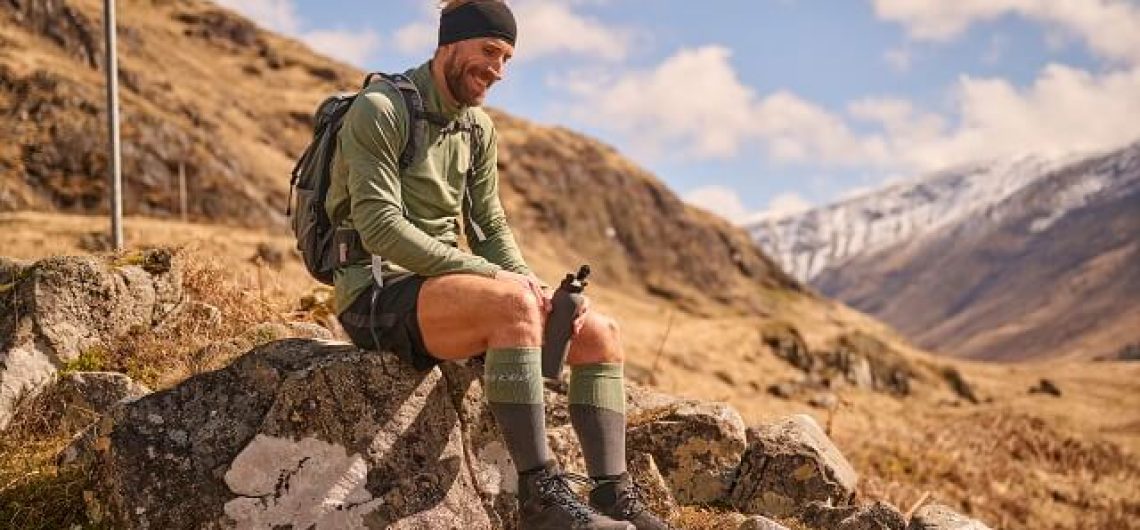A graded compression sock is yet another classification of sock that you might wish to take into consideration. Compression is provided from the foot all the way up to the knee by these socks, which are made of a thin material similar to wool or synthetic material and have elastic incorporated into them.
Compression stockings are meant to provide pressure to the lower leg, which increases blood flow and reduces discomfort and oedema. Compression stockings are also known as compression stockings. When it comes to alleviating fatigue in the lower leg, they are fantastic.
Even while I do not advise using compression socks just for mountaineering because they are not thick enough to provide adequate warmth and cushioning, you might use them as an additional layer of protection in addition to your other socks. Under your hiking socks, you might wear compression socks as a sock liner to further protect your feet. Additionally, you may wear them in camp in order to revitalize your feet after a particularly hard day of hiking.
In addition, I like to wear compression socks while I am flying, as well as on the day that I have a day off between my trip and my hike. When I travel for lengthy periods of time, they help to reduce the edema that occurs in my feet and ankles. Next, when it is time to go hiking, my feet will be prepared!
Compression socks are designed to improve circulation and reduce swelling in the legs and feet. They exert gentle pressure on the muscles and blood vessels, helping to promote blood flow and prevent fluid buildup.
While compression socks are commonly used by athletes and travelers to prevent swelling and improve recovery, their benefits for mountain climbers are less clear-cut. Some climbers may find that wearing compression socks helps reduce fatigue and soreness during long hikes, while others may not notice any significant difference.
Ultimately, whether or not you need compression socks for mountain climbing depends on your individual needs and preferences. If you suffer from circulation issues or experience swelling in your legs and feet during hikes, compression socks may provide relief and improve comfort. However, if you don’t have any specific concerns related to circulation or swelling, wearing regular hiking socks should suffice for most mountain climbing adventures.
In summary, while liner socks and compression socks can offer benefits for some climbers, they are not essential for everyone. It’s essential to listen to your body and choose the socks that provide the most comfort and protection for your feet during your ascent of Kilimanjaro, Mount Kenya, Mount Meru, the Rwenzori Mountains, or Ol Doinyo Lengai.
5 Best Compression socks for mountain climbing
When preparing for challenging climbs like Kilimanjaro, Mount Meru, Mount Kenya, Ol Doinyo Lengai, and the Rwenzori Mountains, having the right gear is essential, including compression socks to support your legs and feet during the ascent. Here are five compression sock brands suitable for climbing these African peaks:
- CEP Compression Socks: CEP compression socks are designed to improve circulation and reduce muscle fatigue during physical activity, making them ideal for long hikes and climbs like Kilimanjaro.
- Sockwell Elevation Graduated Compression Socks: These Sockwell compression socks provide graduated compression to promote blood flow and reduce swelling, helping climbers stay comfortable during their ascent.
- 2XU Compression Socks: 2XU compression socks offer targeted compression to specific muscle groups, aiding in recovery and reducing fatigue during intense activities like mountain climbing.
- Zensah Tech+ Compression Socks: Zensah compression socks feature advanced compression technology to improve circulation and support the feet and calves, enhancing comfort and performance during climbs.
- Vitalsox Graduated Compression Socks: Vitalsox compression socks provide graduated compression to promote blood flow and reduce swelling, helping climbers maintain comfort and endurance throughout their trek.
![]()


Comments